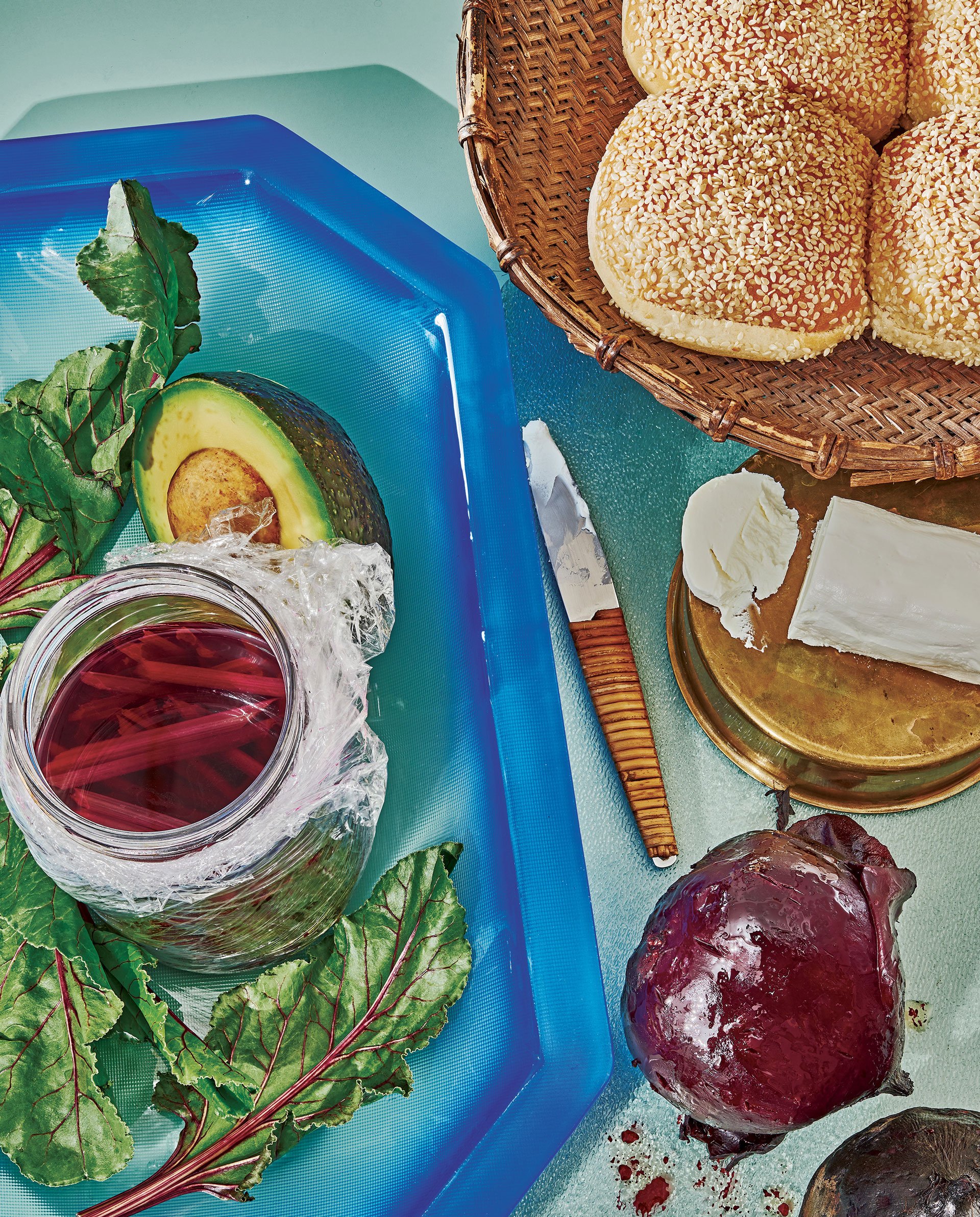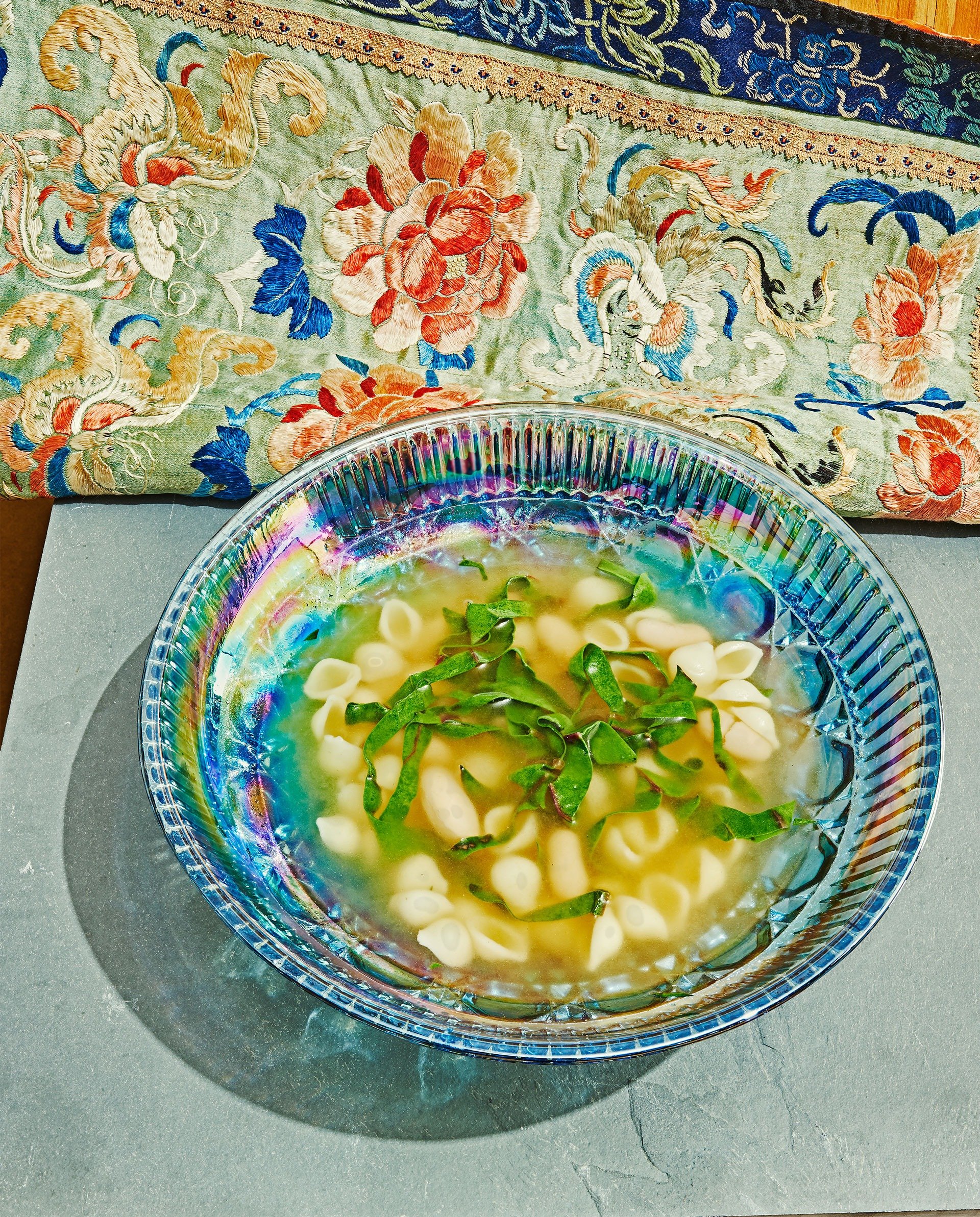The New James Beard Cookbook Will Save You Money
“If food waste were its own country, it would be the world’s third-largest producer of greenhouse gases,” says celebrity Chef Tom Colicchio in the foreword of the new James Beard Foundation cookbook, “Waste Not.” The foundation — a non-profit celebrating the world of chefs with events like their annual James Beard Awards — is focused on sustainable food in their mission. “Waste Not,” which came out in late September, is part of their drive to encourage chefs to set an example and become leaders of a sustainable future.
With slim profit margins, using scraps for stock and turning oft-forgotten ingredients into menu items is a must for chefs. But in the hectic modern home, reducing food waste can seem like a time intensive impossibility: throwing away almost-spoiled food and leaning on convenience items is easier and faster. “Waste Not” applies the chef’s knowledge — and chef’s savings — to home cooking by culling recipes and tips from the foundation’s expansive community of chefs. With chapters featuring whole vegetable cookery, re-using leftovers and preserving techniques —each with a helpful tips and simple suggestions for change in these areas — the book is making waste-free cooking more accessible. As Colicchio says, “Change can be delicious, it can be fun and it can become habit.” With this cookbook on your shelf, it’s that much easier. Below are some tips and recipe ideas from “Waste Not” to get you started.

Don’t Forget the Scraps
Do you peel every carrot you cook? Or toss those beet stems? “Waste Not” wants you to do it differently. Instead of removing peels from vegetables like carrots and cucumber (which are also very nutritious, BTW), simply give your vegetables a quick scrub. As “Waste Not” says, seeing the peels and roots on vegetables “reminds everyone that vegetables come from the earth.” If you do peel, try frying carrot peels as a crispy topping like Sacramento chef Patrick Mulvaney does or turning apple peels and cores into Atlanta chef Steven Satterfield’s scrap jelly. The ultimate food scrap hack? Using the pulp from juicing to make Cleveland chef Jonathon Sawyer’s veggie burgers.
And don’t forget, stems are a perfectly good ingredient, too! Turn carrot stems into pesto as “Iron Chef” allstar Elizabeth Falkner does for her carrot-lentil salad, add swiss chard stems into D.C. area chef Jordan Lloyd’s stem gratin or pickle broccoli stems like like New York City chef Seamus Mullen does for his chicken salad.
It’s Not Over Until It’s Over
Wilty vegetables can seem destined for the trash. But they don’t have to be. Sauté wilted greens to revive them — Providence chef Derek Wagner trims them thin and sautés for his rainbow chard noodles. Or purée them into soup like Chicago chef Rick Bayless does for his radish leaf soup. Bring new life back to wilting vegetables, like carrots, celery and potatoes, by roasting them at high heat or including them in a casserole, like Asheville chef Katie Button does for her vegetable paella. If the vegetables really are at the point of no return, toss them in the compost instead of the garbage.
The Freezer Is Your Best Friend
It might be tempting to toss that parmesan rind in the trash, but don’t do it! Instead, save it in the freezer until you have a few rinds to make New York City chef Sara Jenkins’ parmesan broth (recipe below). This rich soup is also a great base for whatever greens you have in the crisper drawer. Portland, Oregon chef Cathy Whims uses her parmesan rinds to add a dose of umami to her Tuscan bread soup. Turn soft, but still green herbs into puree or pesto, then freeze in ice cube trays; come winter, you’ll have an instant bit of freshness to add into soups or pasta. And, make sure to save the trim and peels from ingredients like asparagus, carrots, mushrooms and onion in a freezer bag so you’ll be ready to make Dig Inn’s Matthew Weingarten’s zero-waste broth.
Repurpose Leftovers
We get it, you don’t want to eat the same thing for four days. But tossing leftovers is not an option. Instead, rethink what they are. Day-old mashed potatoes become the base of Kansas City chef Howard Hanna’s fluffy potato rolls. You can also use them for Atlanta chef Nick Leahy’s take on the traditional British classic bubble and squeak. Mix leftover roasted meat and veggies into New York City chef Evan Hanczor’s breakfast hash, or turn to Mexican flavors and use them for Los Angeles chefs Mary Sue Milliken and Susan Feniger’s skillet chilaquiles. And for a most decadent leftover makeover, Twin Cities chefs Lisa Carlson and Carrie Summer turn stale doughnuts into a bread pudding-type casserole.

Recipe: Parmesan Broth with Greens, Beans and Pasta
10 cups homemade or store-bought chicken stock
8 ounces Parmesan cheese rinds (about 6 to 8 rinds)
1/2 cup dry soup pasta (such as ditalini, annelini, or orzo)
1/2 cup cooked white beans
4 cups loosely packed, tender cooking greens (such as spinach, chard, mustard greens, kale, or chicory), roughly cut into 1/4- to 1/2-inch-wide ribbons
1 lemon
Make the homemade chicken stock: combine the carrots, celery, onion, garlic, and olive oil in a large stockpot or soup kettle and set over high heat. Cook, stirring, until the vegetables are browned, about 8 minutes. Add the chicken carcasses, parsley, wine, and just enough water to cover the chicken and vegetables (about 12 cups water).
Reduce the heat to medium-low. When the broth comes to a simmer, add 2 cups cold water (this technique will keep the stock cooking at a low simmer; the stock should never come to a rolling boil, as that simply redistributes impurities). Reduce the heat to low and allow the stock to gently simmer, checking every ½ hour or so to skim the surface of fat and add cold water as needed. The chicken and vegetables should always be barely covered with liquid. Cook until the stock is very rich, about 4 hours. You will have about 4 ½ quarts, so freeze leftovers in 1-cup and 1-pint containers to have a supply always at the ready.
Strain the stock, discarding the vegetables and bones. Refrigerate the stock for 2 to 3 days or freeze for up to 6 months until ready to use.
Make the Parmesan broth with beans, greens, and pasta: in a large pot, combine the broth and cheese rinds and bring to a light simmer over extremely low heat. Simmer for about 2 hours, or until the broth has reduced to about 8 cups. Strain the broth through a sieve and discard the rinds.
Bring the broth back to a simmer and add salt to taste. Add the pasta and cook until al dente, about 10 minutes. Add the cooked white beans and the greens. When the pasta is done, turn off the heat, taste, and adjust for seasoning. Grate the lemon zest directly over the pot and squeeze the lemon juice into the soup. Serve immediately.
© “Waste Not” by The James Beard Foundation, Rizzoli New York, 2018. Photography © Keirnan Monaghan and Theo Vamvounakis.
More Reading
Gamify your family’s food waste reduction
June 30, 2025
Can food recyclers help us tackle household food waste?
June 18, 2025
Do organic waste bans and composting programs really take a bite out of food waste?
March 17, 2025
What is Europe getting right about food waste in schools?
November 15, 2024
Municipal composting has increased, but what does that really mean?
May 16, 2024
6 upcycled food trends to watch
February 13, 2024
Food scholar Darra Goldstein on the culinary history of preservation
October 30, 2023
Candying is the sweetest way to prevent food waste
October 12, 2023
Colleges have high rates of food insecurity and food waste. Students are helping address both.
October 4, 2023
The FoodPrint Guide to Freezing
August 3, 2023
